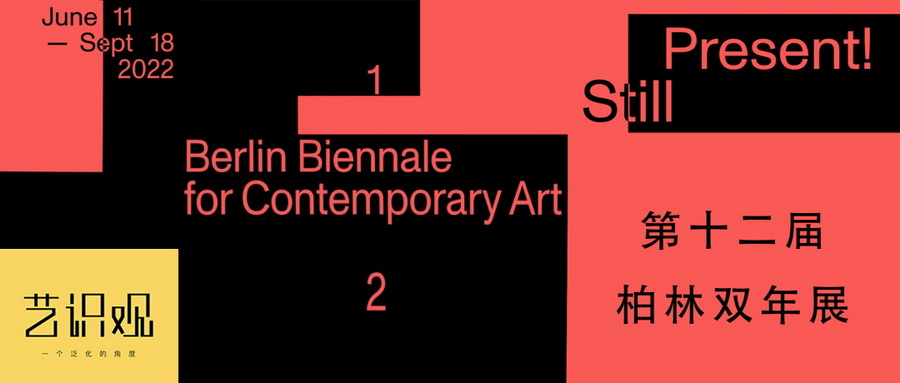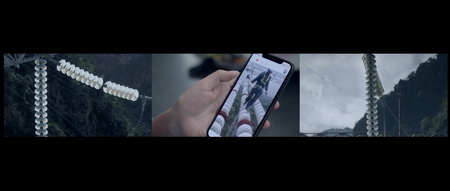
柏林
第十二届柏林当代艺术双年展
12th Berlin Biennale for Contemporary Art
第 12 届柏林当代艺术双年展主题为“ Still Present!”,来自世界各地的艺术家将参与现代化的遗产以及由此产生的全球紧急状态。除了他们的作品,展览还展示了历史文献,包括 Archiv der Avantgarden – Egidio Marzona (AdA) 的政治和激进出版物。这些文献揭示了殖民主义、法西斯主义和帝国主义之间的联系,并围绕一系列问题提出了未来的非殖民化战略:如何塑造非殖民化生态?非西方女权运动在历史叙事的重新挪用中可以发挥什么作用?除了归还被掠夺的文物之外,如何重新讨论关于归还问题的辩论?情感领域可以通过艺术来回收吗?
关于柏林当代艺术双年展
自1996年创办以来,柏林当代艺术双年展已成为当代艺术最重要的国际论坛之一。它汇集了欧洲最具影响力和代表性的艺术家、理论家和实践者。
柏林双年展每两年在柏林的不同地点举行一次,主题由当届策展人定义。它推广实验,并为指定的策展人提供空间和自由,于艺术市场和收藏之外呈现最新的具有挑战性的立场。
自2004年以来,它一直由德国联邦文化基金会(Kulturstiftung des Bundes)资助,作为其“卓越文化机构”之一,承认其在全国范围内的重要性和国际声誉,从而授予其在公共资金领域的最优质称号。德国联邦文化基金会的支持使柏林双年展具有高度的自主权,从而具有巨大的发展潜力。
柏林双年展自第一届以来一直认为自己是“全球化”活动。艺术和策展立场阐明了在各自时间点在国际上突出和重要的文化问题和趋势。这些趋势和发展如何影响柏林是调查的重要焦点。因此,柏林双年展吸引了柏林人和国际观众,每两年为这座城市提供一次文化亮点。
策展人阐述
Still Present!
Kader Attia
“人类世界的多维度构造都存在于决定全球资本主义疯狂和破坏性生产竞赛的浪费和破坏中。在现代,我们的星球经历了一系列毁灭性的变化,这些变化在第三个千年之初以惊人的速度加速。我们到达今天的位置并非偶然:它诞生于几个世纪以来的历史结构。现代西方社会出于自私,将自己的自由主义性格视为理所当然,错误地认为自由贸易和普选之间的平衡保证了具有普遍民主价值观的自我调节体系。从那个乌托邦式的承诺中,我们继承了一个反乌托邦社会,它否认对它所产生的混乱负有任何责任。世界以西方现代性历史进程中出现的伤口为标志。如果不加以解决,它们将继续困扰我们的社会。我们需要意识到这种现代性/殖民统一的资本主义逻辑的含义及其使主体去政治化的能力。
我们今天所居住的社会世界的特点是相互关联的环境,它们之间的相互作用并不明显可见。算法治理也比以往任何时候都更能抓住我们的现状。它已成为提取行为数据的前所未有的经济斗争领域。这是一个如此强大的经济模式,似乎不可能将现在从它的魔掌中解放出来。我们每天将我们的行为投射到未来或过去,并想象自己在现在。我们如何回收它们?首先重新吸引我们的注意力。艺术的时代延伸得很远。最重要的是,他们现在是免费的。意识是情感世界的一部分,是当下的一种运动:作为情感和解释的存在,我们无法估量地穿过它们。这使我们能够摆脱资本主义行为操纵的技术和与之相伴的帝国主义治理。我们必须呆在此时此地,比以往任何时候都更重要!”
“我经常被问到:非殖民化思维之后会发生什么?然而,与其说是关心之后会发生什么,不如说这是此时此地持续的对话,一系列修复行为正在社会的不同领域发生。”——Kader Attia
在全球南方人民实现政治独立很久之后,殖民主义继续对现在产生影响。500多年的殖民思想和行动塑造了南方社会和北方社会生活的方方面面。殖民暴力、法西斯主义和资本主义剥削持续存在。从殖民模式中解放知识、思想和行动是非殖民化进程背后的动力,该进程寻求不学习所学知识,并不断质疑自己的观点。
Kader Attia回顾了二十多年的非殖民化参与。作为一名艺术家、思想家和召集人,他特别关注修复的概念——首先是物体和身体伤害,然后是个人和社会创伤。在他的整个实践中,修复已成为一种文化抵抗模式,一种在不同的实践和知识领域得到表达的代理形式。作为第12届柏林双年展的策展人,Attia将这种形式的代理作为该项目的起点,让贡献者和观众都参与关于如何关心现在的关键对话。
随着艺术作为一种精心修复形式的认可,第12届柏林双年展围绕一系列问题展开。如何构想艺术的非殖民化——从归还被掠夺的物品到反殖民的记忆文化?非西方女权主义运动在重新盗用历史和身份方面可以发挥什么作用?气候危机和殖民主义如何相关,如何抵制资源开采和承认本地知识以保护生态系统?
通过展览、干预和活动,第12届柏林双年展将横跨该市的不同场地,提供一个弥合不同知识生产领域的散文空间。从2022年6月11日至9月18日,一场复调辩论不断演变,召集艺术家、学者和活动家用其破裂和矛盾描绘世界地图,为殖民编年史创造反叙事,并合作塑造未来新的形式。
参展艺术家
Alex Prager • Amal Kenawy • Ammar Bouras • Antonio Recalcati, Enrico Baj, Erró, Gianni Dova, Jean-Jacques Lebel, Roberto Crippa • Ariella Aïsha Azoulay • Asim Abdulaziz • Basel Abbas and Ruanne Abou-Rahme • Binta Diaw • Birender Yadav • Calida Garcia Rawles • Christine Safatly • Clément Cogitore • DAAR – Sandi Hilal and Alessandro Petti • Dana Levy • Đào Châu Hải • David Chavalarias • Deneth Piumakshi Veda Arachchige • Driss Ouadahi • Dubréus Lhérisson • Elske Rosenfeld • Etinosa Yvonne • Florian Sông Nguyễn • Forensic Architecture • Haig Aivazian • Hasan Özgür Top • Imani Jacqueline Brown • Jean-Jacques Lebel • Jeneen Frei Njootli • Jihan El-Tahri • João Polido • Khandakar Ohida • Lamia Joreige • Lawrence Abu Hamdan • Layth Kareem • Mai Nguyễn-Long • Maithu Bùi • Marta Popivoda/Ana Vujanović • Mathieu Pernot • Mayuri Chari • Mila Turajlić • Mónica de Miranda • Moses März • Myriam El Haïk • Ngô Thành Bắc • Nil Yalter • Noel W Anderson • Olivier Marboeuf • Omer Fast • PEROU – Pôle d’Exploration des Ressources Urbaines • Prabhakar Kamble • Praneet Soi • Raed Mutar • Sajjad Abbas • Sammy Baloji • Simone Fattal • Susan Schuppli • Susana Pilar • Sven Johne • Taloi Havini • Tammy Nguyen • Taysir Batniji • Tejswini Narayan Sonawane • Temitayo Ogunbiyi • The School of Mutants (Boris Raux, Hamedine Kane, Lou Mo, Stéphane Verlet Bottéro, Valérie Osouf) • Thùy-Hân Nguyễn-Chí • Tuấn Andrew Nguyễn • Uriel Orlow • Yuyan Wang • Zach Blas • Zuzanna Hertzberg

▲第十一届柏林当代艺术双年展现场; Florencia Rodriguez Giles, Pedro Moraleida Bernardes, Young-jun Tak; installation view; photo: Silke Briel

▲第十届柏林当代艺术双年展现场; Dineo Seshee Bopape, Untitled (Of Occult Instability) [Feelings], 2016–18; Courtesy Dineo Seshee Bopape, Jabu Arnell, Lachell Workman, Mo Laudi, Robert Rhee, Sfeir-Semler Gallery, Hamburg/Beirut; Installationsansicht; Foto: Timo Ohler

▲第九届柏林当代艺术双年展现场; GCC, Positive Pathways (+), 2016; Courtesy GCC; Kraupa-Tuskany Zeidler, Berlin; Project Native Informant, London; Mitchell-Innes & Nash, NY; Installationsansicht; Foto: Timo Ohler

▲第八届柏林当代艺术双年展; Alberto Baraya, Expedition Berlín, Herbarium of Artificial Plants, 2013–fortlaufend; Courtesy Alberto Baraya; Galeria Nara Roesler, São Paulo; Installationsansicht; Foto: Anders Sune Berg

▲第七届柏林当代艺术双年展; Joanna Rajkowska, Born in Berlin, 2012, Installationsansicht
柏林当代艺术双年展地点

▲Akademie der Künste, Hanseatenweg

▲Akademie der Künste, Pariser Platz
The Akademie der Künste in Berlin is an international community of artists active in the academy’s six sections: visual arts, architecture, music, literature, performing arts, and film and media arts. Founded in 1696 and located at Pariser Platz for over two centuries, its building was badly damaged during World War II. With the postwar division of Berlin, separate academies were established in the East and West but eventually reunited after the fall of the Berlin Wall. Built in 1960, the western location on Hanseatenweg continued to host exhibitions and discursive programs. In 2005, the Akademie der Künste inaugurated a new glass building on Pariser Platz—the ruins of the original structure served as an exhibition site for the 1st Berlin Biennale in 1998. While several editions of the Berlin Biennale have taken place at one of the two locations, the current edition makes use of both for the very first time.

▲Dekoloniale Memory Culture in the City
Using the example of Berlin, the pilot project Dekoloniale Memory Culture in the City attempts to identify (post)colonial effects present in a metropolis and its institutions, inhabitants, and physical spaces. The project space is located on Wilhelmstraße 92 between the former sites of the Reich Chancellery and the Foreign Office, where envoys of the European powers, the United States, and the Ottoman Empire convened for the Berlin Conference (1884/85) at the invitation of the German Reich and the Republic of France. Here, they reached an agreement about the rules for the colonial partitioning of Africa, creating the necessary conditions for its exploitation. Dekoloniale Memory Culture in the City is a joint project of Berlin Postkolonial e. V., Each One Teach One (EOTO) e. V., Initiative Schwarze Menschen in Deutschland (ISD Bund e. V.), and the Stadtmuseum Berlin Foundation.

▲Hamburger Bahnhof – Museum für Gegenwart – Berlin
Built in the mid-nineteenth century as the terminus of the railway line connecting Hamburg and Berlin, the Hamburger Bahnhof was converted into a museum of transportation and technology in the early twentieth century. Following the postwar division of Germany, the building was abandoned due to its peripheral location in the wasteland between East and West Berlin. In 1996, it reopened as a contemporary art venue of the Nationalgalerie. Today, the Hamburger Bahnhof – Museum für Gegenwart – Berlin is one of the world’s largest and most significant public collections of contemporary art. With an exhibition space of approximately 10,000 square meters, the Hamburger Bahnhof displays works from the Nationalgalerie and other important international collections and hosts thematic exhibitions.

▲KW Institute for Contemporary Art
KW Institute for Contemporary Art aims to approach the pressing questions of our times through the production, display, and mediation of contemporary art. Founded during the turbulent period following German reunification in a derelict factory on Berlin’s Auguststraße, KW has established itself as a dynamic venue for progressive art practices. It was also here that the Berlin Biennale for Contemporary Art was inaugurated in 1998. Since then, KW has served as an anchor exhibition venue for the Berlin Biennale, which presents artistic projects and mediation programs at diverse venues across the city to contribute new perspectives to contemporary cultural discourse in Berlin and beyond.

▲Stasi Headquarters. Campus for Democracy
During the GDR era, the headquarters of the Ministry for State Security (Stasi) in Berlin-Lichtenberg was a huge complex made up of nearly fifty buildings and thousands of offices. It was here that some 7,000 state employees organized the surveillance and persecution of citizens of the German Democratic Republic and conducted the GDR’s foreign espionage operations—both to sustain SED (East German Communist Party) rule. In January 1990, demonstrators forced their way onto the sealed-off grounds, initiating the end of the Stasi and the destruction of its files. Today, this former bastion of the secret police is an educational site about dictatorship and resistance and a learning center for democracy.
文章内容来自12.berlinbiennale官方网站
【声明】以上内容只代表原作者个人观点,不代表artda.cn艺术档案网的立场和价值判断。

